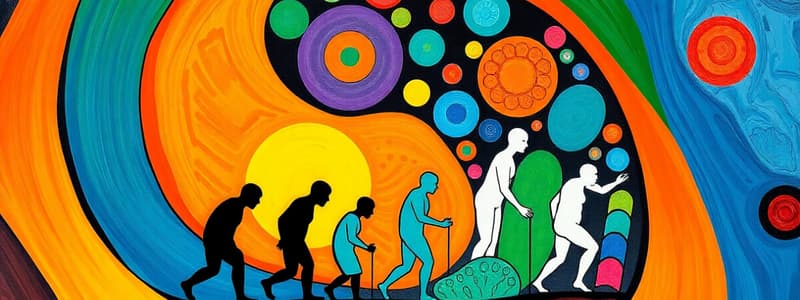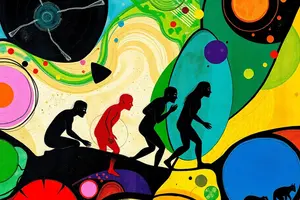Podcast
Questions and Answers
What is the concept of evolution?
What is the concept of evolution?
The process by which different kinds of living organisms are believed to have developed from earlier forms during the history of the earth.
Who proposed the theory of evolution based on survival of the fittest?
Who proposed the theory of evolution based on survival of the fittest?
Charles Darwin
What are the main characteristics of organisms? (Select all that apply)
What are the main characteristics of organisms? (Select all that apply)
- Maintain homeostasis (correct)
- Reproduce (species) (correct)
- Have a central nervous system
- Made of cells (correct)
- Require energy (food) (correct)
What is the basic unit of life?
What is the basic unit of life?
Eukaryotes have a nucleus and membrane-bound organelles.
Eukaryotes have a nucleus and membrane-bound organelles.
Who formulated the cell theory?
Who formulated the cell theory?
Which kingdoms consist of prokaryotic organisms?
Which kingdoms consist of prokaryotic organisms?
What is the role of the nucleus in a cell?
What is the role of the nucleus in a cell?
What is the function of the plasma membrane?
What is the function of the plasma membrane?
Flashcards are hidden until you start studying
Study Notes
Introduction to the Concept of Evolution
- Evolution is the process of change in heritable characteristics of biological populations over generations.
- Lamarck (1801) proposed spontaneous generation of species based on needs and functionality of mutations.
- Darwin (1859) proposed the theory of evolution by natural selection, based on survival of the fittest and mutations.
Characteristics of Living Organisms
- Composed of cells.
- Require energy (food).
- Reproduce (species).
- Maintain homeostasis.
- Organized structure.
- Respond to the environment.
- Grow and develop.
- Exchange materials with surroundings (water, wastes, gases).
Cell Theory
- All living things are made of cells.
- Cells are the basic unit of structure and function in organisms (basic unit of life).
- Cells come from the reproduction of existing cells (cell division).
- Proposed by Schleiden (botanist) and Schwann (zoologist) in 1838.
Cell Types: Prokaryotes and Eukaryotes
- Prokaryotes: Lack a nucleus and membrane-bound organelles; possess a nucleoid region containing DNA, ribosomes, a cell membrane, and a cell wall (peptidoglycan). Examples include bacteria.
- Eukaryotes: Possess a nucleus and membrane-bound organelles; more complex than prokaryotes. Include protists, fungi, plants, and animals.
Whittaker's Five Kingdom Classification
- A system classifying organisms into five kingdoms based on their characteristics. (Details of the five kingdoms and their characteristics are not provided in this excerpt).
Cell Organelles and Their Functions
- Cell Membrane (Plasma Membrane): Composed of a phospholipid bilayer and proteins; surrounds the cell; controls what enters and leaves. A living layer.
- Cytoplasm: Jelly-like substance enclosed by the cell membrane; provides a medium for chemical reactions; contains organelles.
- Nucleus: Controls cell activities; contains DNA in chromosomes; bounded by a nuclear envelope with pores; usually the largest organelle. (Further details on other organelles are not included in this excerpt).
Homeostasis, Replication, Cell Division, and Tissue Differentiation
- These topics are listed in the unit outline but are not covered in the provided text.
Stem Cells and Genetic Algorithms
- These topics are listed in the unit outline but are not covered in the provided text.
Studying That Suits You
Use AI to generate personalized quizzes and flashcards to suit your learning preferences.




